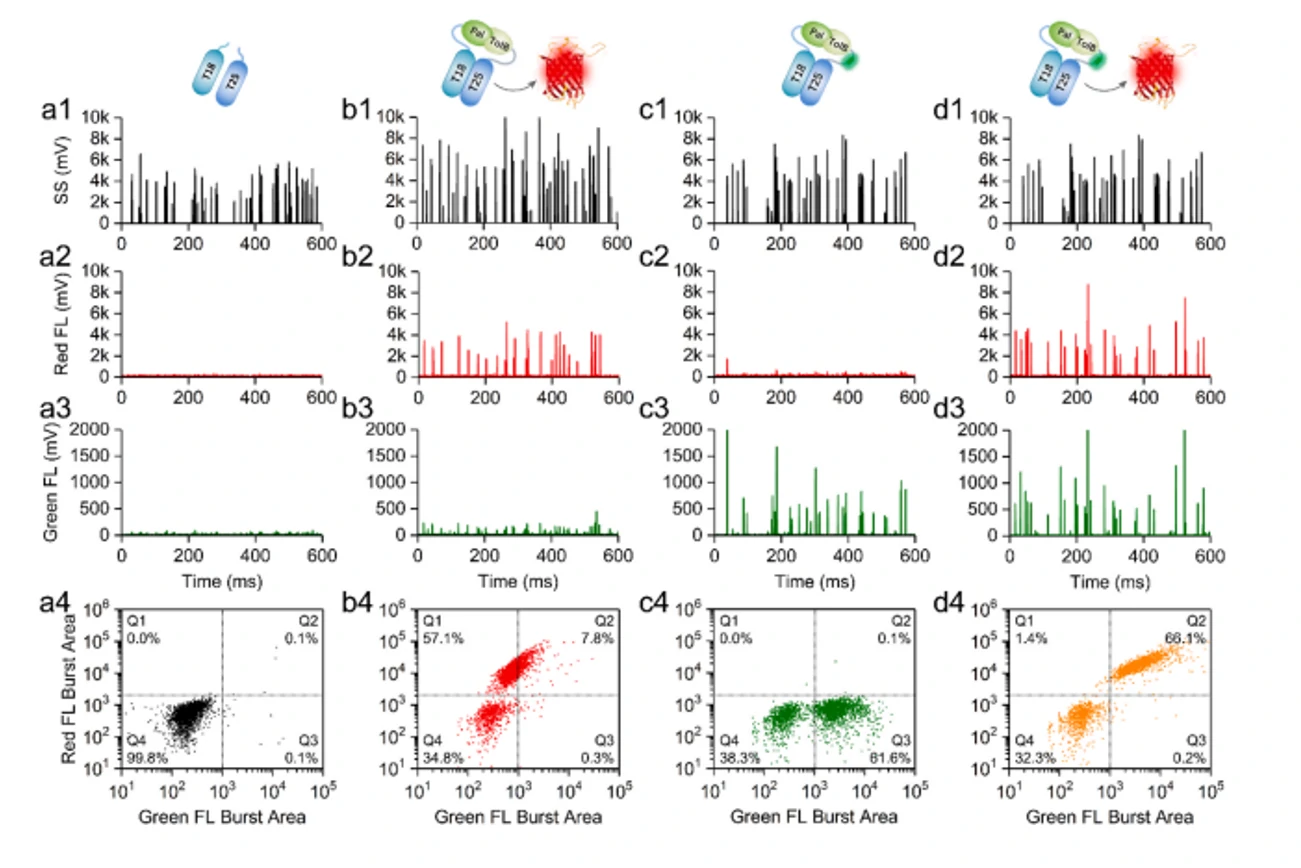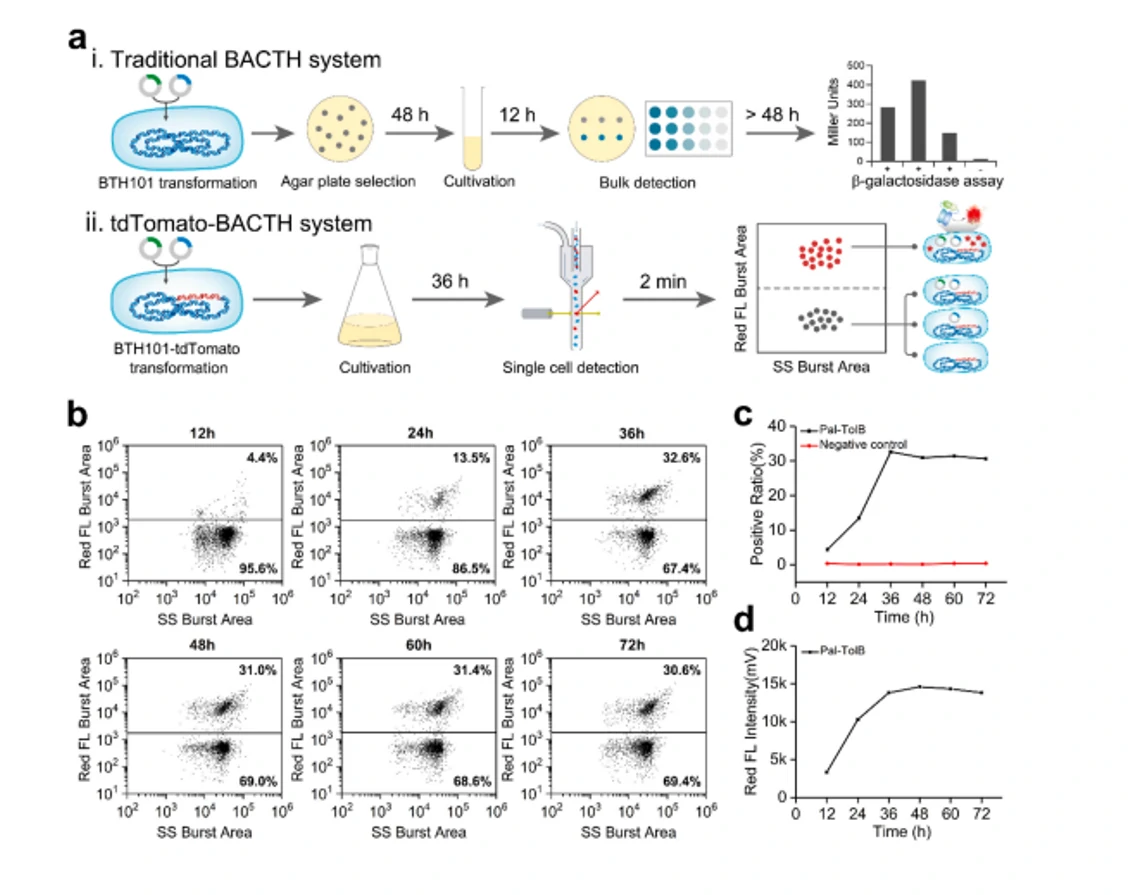Detection of protein interaction in bacterial two-hybrid system
Author: admin Date: February 22, 2024
Characterization of protein-protein interactions (PPIs) is critical to understanding cellular signal transduction pathways. However, quantitative measurement of binding strength remains challenging. Based on the classic bacterial adenylate cyclase two-hybrid (BACTH) system, previous studies have confirmed that the relative reporter protein expression (RRPE) is related to the interaction between the two proteins and the binding strength-related intrinsic features.
In this study, the gene of the fluorescent protein tdTomato was inserted into the chromosome through CRISPR/Cas9 technology, and one of the interacting proteins was marked with a 12 amino acid tetracysteine (TC), which could be further marked with a transmembrane double arsenic dye. The combined use of TdTomato and the TC-tag enables rapid and high-throughput analysis of the expression levels of reporter proteins and protein interactions at the single-particle level by the Flow NanoAnalyzer, thus simplifying the quantitative measurement of PPI. In addition, the study also used the developed RRPE-tdTomato-TC-BACTH method, demonstrating that the method is sensitive enough to distinguish small differences with an affinity of 1.4 times and can quickly screen out protein interaction inhibitors.

Figure 1. Simultaneous detection of tdTomato–TC-BACTH protein expression

Figure 2. tdTomato-BACTH method for rapid identification of target cells
Combined with dual fluorescent labeling assays, the Flow NanoAnalyzer can eliminate fixation and permeabilization treatments, greatly speeding up sample analysis. Quantitative analysis of protein interactions and reporter protein expression was performed simultaneously. Based on the tdTomato-BACTH method of NanoFCM, the traditional agar plating step is eliminated. Thereby, providing high-throughput identification of target cells and verifying that the tdTomato-BACTH method has the potential of high-throughput PPI research.
Talanta, 2021, 233, 122549.




